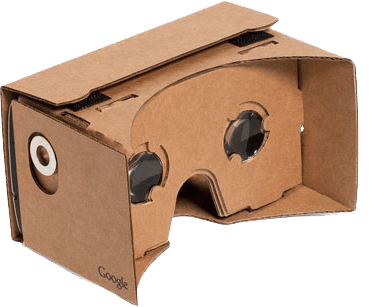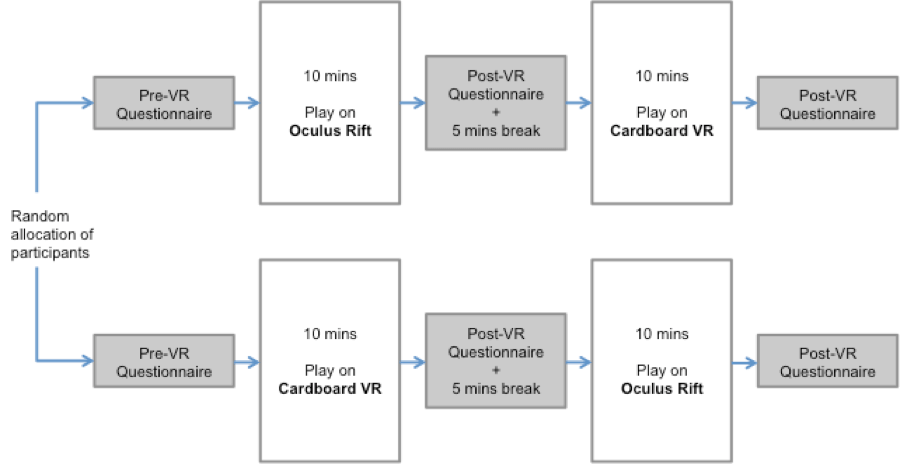Experimental Design

This study used a repeated-measure design where each patient played InMind on both Cardboard and Oculus Rift in a random order. A random uniform distribution was ensured so that half of the participants used Cardboard first, and the other half used Oculus first. The primary independent variable was the HMD type. The primary dependent variable was the retroactive pain intensity (PI). I have two kinds of PIs– Present Pain Intensity and Retroactive Pain Intensity (pain felt in the last 10 minutes). I used the retroactive PI to measure the patients’ perceived pain intensities while they were inside the virtual environment. PI levels were measured thrice repeatedly–once, before playing the VR game; next, after playing the game on one of the HMDs; and finally, after playing the game again on the other HMD. Patients reported the PI by filling out visual analog scale (VAS) questionnaires. Immersion was another secondary dependent variable, which manifested in several questions on the VAS questionnaire. There were two different variations of VAS questionnaires–one for the Pre-VR condition and, another for the Post-VR condition.

